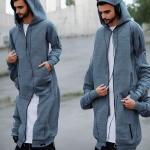The fashion industry is notorious for its significant environmental impact. From the vast amount of water used in cotton cultivation to the harmful effects of chemical dyes, the footprint left by this industry is massive. However, an increasing number of fashion brands are now recognizing the need for change, and are investing in sustainable practices and materials to reduce their environmental impact.
As consumers, we have a crucial role to play in this transformation. By choosing to support brands that prioritize sustainability, we can help drive the demand for eco-friendly clothing and contribute to a more sustainable future. This article delves deeper into the issue and highlights some of the innovative solutions currently being explored by the fashion industry.
A lire aussi : What Is the Future of Electric Aviation and Its Impact on Sustainable Travel?
Sustainable Materials in Fashion
The first step towards sustainable fashion starts with the materials. The production of conventional textiles like cotton and polyester have severe environmental effects, leading many brands to seek out eco-friendly alternatives.
Over the past few years, the industry has seen a surge in the use of sustainable materials. From organic cotton that requires less water and no harmful pesticides to grow, to recycled polyester crafted from used plastic bottles, these alternatives offer a more sustainable approach to clothing production. Some brands are even experimenting with more unconventional materials, such as pineapple leather or mushroom silk, offering unique and environmentally-friendly options to consumers.
Avez-vous vu cela : What Are the Latest Advances in Non-Invasive Brain-Computer Interfaces?
Even the dyeing process, often criticised for its excessive water use and chemical pollution, is undergoing a green makeover. Brands are now turning to natural dyes derived from plants, insects and even bacteria, providing a less harmful alternative to conventional synthetic dyes.
Eco-friendly Production Practices
The second aspect of sustainable fashion revolves around production practices. The fashion industry is currently the second-largest consumer of water worldwide, not to mention the copious amounts of energy used in manufacturing. This calls for a reform in production processes, with brands now introducing innovative methods to reduce their resource consumption.
For example, some clothing brands are introducing closed-loop production systems, where water used in the dyeing process is filtered and reused, significantly reducing water waste. Others are investing in renewable energy sources for their production facilities, further minimising their environmental impact.
Moreover, with an increasing awareness of the social aspect of sustainability, fair-trade and ethical labour practices are also gaining importance. Brands are ensuring fair wages and working conditions, and are striving for transparency in their supply chains to allow consumers to make informed decisions.
The Role of Recycled Materials
One of the most significant changes in the fashion industry is the shift towards using recycled materials. This not only reduces the need for virgin resources but also helps manage the increasing problem of textile waste.
Many brands are now incorporating recycled materials into their collections, with recycled cotton, polyester, and even leather becoming increasingly common. Some companies have launched take-back programs, where customers can return their old clothes for recycling, promoting a circular economy and reducing the amount of clothing that ends up in landfills.
In addition, innovative techniques are being developed to recycle mixed fabrics, which were previously difficult to process. This opens up new possibilities for recycling and improving the sustainability of the industry.
Consumer Awareness and Engagement
While the industry can make significant strides towards sustainability, it also requires the engagement and participation of consumers. After all, the most sustainable garment is the one that is already in your closet.
Consumer awareness about the environmental impact of their clothing choices is growing. This has led to an increased demand for sustainable fashion, with more people seeking out brands that align with their values.
Moreover, consumers are also becoming more mindful of their consumption habits, opting for quality over quantity, and embracing the concept of a ‘capsule wardrobe’. This minimalist approach to fashion not only reduces the demand for new clothes but also encourages people to value and care for their garments, thereby extending their lifespan.
Towards a More Sustainable Future
The journey towards sustainable fashion is a challenging one, filled with obstacles and complexities. Yet, the solutions and practices highlighted above demonstrate that change is possible and already underway.
As consumers, we have the power to support this shift towards sustainability. By championing brands that prioritize the environment, making mindful choices, and questioning our consumption habits, we can make a significant difference.
The future of fashion is indeed green, and it is up to us to make it a reality.
The Role of Fashion Design in Sustainability
A crucial aspect of sustainable fashion lies in the realm of design. Fashion design plays an instrumental role in determining the environmental impact of a garment, from the choice of materials to the manufacturing process. As such, sustainable fashion design is emerging as a key area of focus for many eco-conscious brands.
Slow fashion, a concept that advocates for quality over quantity, is one of the leading sustainability trends in the design process. This approach encourages designers to create timeless pieces that are durable and versatile, reducing the need for frequent consumption and disposal of clothing. Slow fashion also promotes the idea of a ‘capsule wardrobe’, a collection of essential items that can be mixed and matched, further minimizing the need for excessive clothing items.
The use of sustainable fabrics is another important aspect of green fashion design. Organic cotton, recycled polyester, and innovative materials like pineapple leather or mushroom silk are increasingly being used in place of traditional textiles. These sustainable materials not only reduce the environmental impact but also pave the way for interesting and novel designs.
Additionally, designers are also exploring the concept of circular fashion. This involves designing garments in a way that they can be disassembled and recycled at the end of their life cycle, contributing to a circular economy and reducing the carbon footprint of the fashion industry.
The Impact of Supply Chains on Sustainable Fashion
The supply chain of the fashion industry is remarkably complex, involving various stages from raw material sourcing to garment production and retail. Each stage has a significant environmental impact and presents opportunities for implementing sustainable practices.
A key aspect of sustainable supply chains is the sourcing of raw materials. This includes ensuring that the materials are produced ethically and sustainably, with minimal harm to the environment. For instance, brands opting for organic cotton ensure that the cotton is grown without harmful pesticides, reducing the environmental impact.
In addition to sustainable sourcing, many fashion brands are striving for transparency in their supply chains. This allows consumers to trace the journey of their garments, from the farm to the store. Transparency not only fosters trust among consumers but also holds brands accountable for their environmental and social practices.
Moreover, brands are now extending the responsibility of their supply chains to the end of a garment’s life. This involves setting up take-back programs, where consumers can return their used garments for recycling, thus promoting a circular economy and reducing textile waste.
Conclusion
The transformation towards sustainable fashion is a collective effort, involving not only the fashion industry but also consumers and policymakers. While the fashion brands are making strides in adopting sustainable materials and practices, consumers also have a critical role to play. By supporting sustainable brands, making mindful choices, and reducing consumption, we can make a profound impact on the fashion industry’s environmental footprint.
Despite the challenges, the progress made in recent years is promising. From innovative materials to eco-friendly production practices and ethical supply chains, the fashion industry has demonstrated that a more sustainable future is not only possible but is already taking shape.
As we move forward, it is essential to continue this momentum and strive for a more sustainable and ethical fashion industry. With collective action and commitment, we can ensure that the future of fashion is indeed green.











